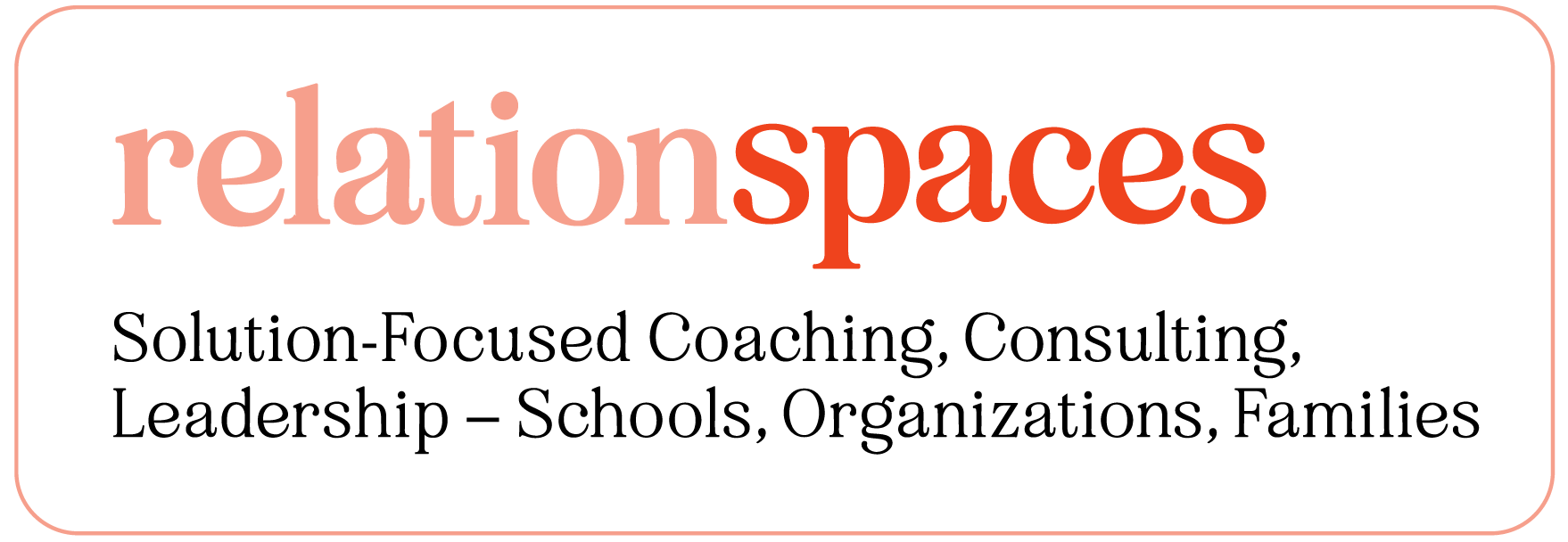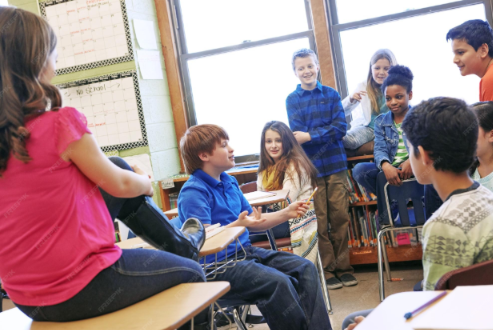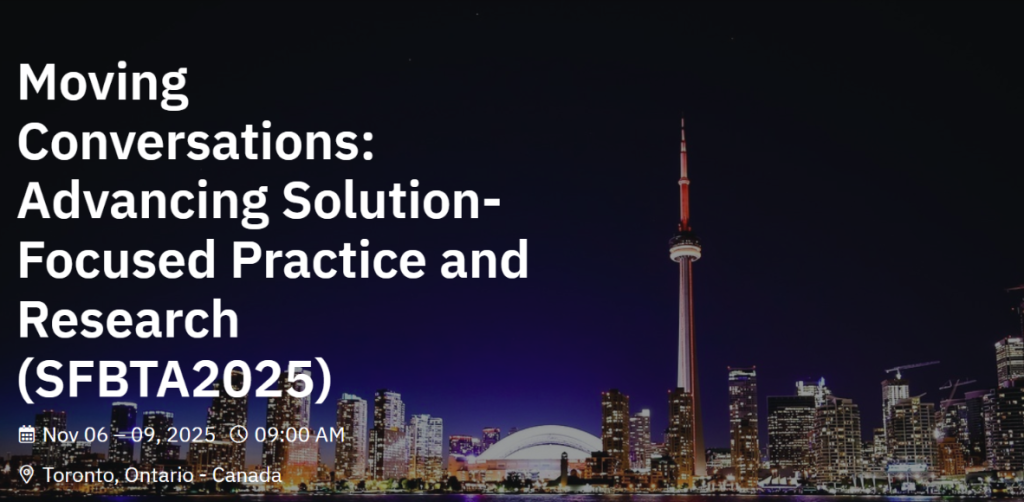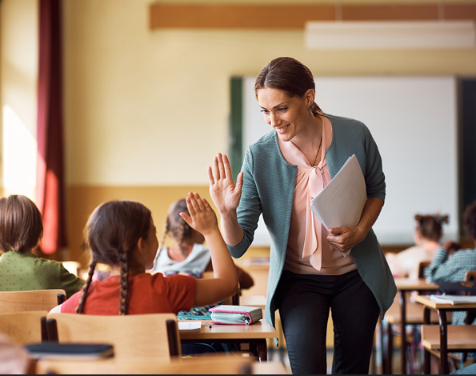Schools are active spaces for connection, where students and staff are immersed in much more than the academic curriculum. In schools, stakeholders make daily interactive choices and develop effective relationships. In a day, staff can have up to 100 conversations with students, colleagues, administration, families and community. How can they engage in and model conversations to support successful relationships that contribute to wellbeing and achievement for all?
When I ask administrators and staff if they value the importance of relationships in schools, they inevitably respond positively. Yet they are more apprehensive when asked how they are prioritizing effective communication as it promotes wellbeing in relationships. In the intense flurry of a busy work environment, other priorities often take precedence (operations, curriculum development, school and academic planning, assessment, extra-curriculars, etc). Schools do need to prioritize academic and operational responsibilities, but we also need to be cognizant of how the fast pace challenges our ability to think about how we engage in relationships. We know that schools make productive gains in inclusion, wellbeing and academic success, when they set a standard for intentionally effective communication (Salamondra, 2021). Students and staff who feel seen, heard and respected, are more likely to want to be at school, to self-advocate and to find success.
When we invest in productive connections with others, we find that what follows are more vibrant schools and classrooms, inspired teachers and better learners. In The Third Path – A Relationship-Based Approach to Student Well-being and Achievement, Tranter, Carson and Boland (2018) have studied the benefits of a focus on relationships through productive communication in schools. They recognize how for several years, schools have been generating ideas to promote the pathway of wellbeing in addition to that of achievement. Perceived as a separate pathway however, ‘wellbeing’ often gets diluted or bumped out as academic expectations take precedence. Their idea is to introduce a third pathway that interprets ‘achievement and wellbeing’ as interconnected, where wellbeing is explicitly reflected in our pedagogy and systemic planning. This third pathway challenges stakeholders to shift to an active stance in how everyone relates with each other on a daily basis, as a way in which to support wellbeing through safe spaces for learning and working.
Common Assumptions about Communication
- We should all be expected to communicate well in our capacity as leaders and role models
- Children should behave appropriately
- Staff should connect with each other respectfully
- Educators should develop a productive relationship with their student’s parents
- Parents should develop a productive relationship with their child’s educators
The operative word in the above is ‘should’. Herein lies an assumption; that everyone knows how to communicate effectively and that they act on this knowledge. Assumptions keep us from taking a closer look at reality. If we were to assume for example, that all children consistently grasp the curriculum successfully, we wouldn’t need educators to guide and support them. Yet we know this not to be true, and so we dedicate ourselves to developing and implementing meaningful pedagogy that supports student success. The same applies to assuming that everyone communicates effectively. Left unattended, intentionally positive communication can be overlooked and can lead to a gradual decline in all relationships in learning and working environments.
Effective communication requires a dedicated approach to how we engage with others, using practical and accessible skills. In my work with schools as a solution-focused trainer and consultant, staff members will often say to me, ‘I’m so angry with how that teacher/administrator/student talks to me’. I listen to their concerns and when I follow with ‘How have you been communicating with that individual?’, they often realize in the moment that they too have played a role in not bringing their best self to the communication with that person.
Starting with Intention
Relationships are communicative spaces that shift and evolve as they are seeded with the choices we bring to them. Each of these spaces is unique to every one of our relationships. I refer to these as relationspaces. A healthy relationspace is one in which individuals intentionally co-create an inclusive space where both parties are responsible for process and outcome in the communication. Creating a healthy relationspace involves an intention to being invested in a productive interaction, to keeping an open mind, setting aside any pre-existing expectations, and actively listening to the other person. Even when the other person appears not to be cooperating, when we choose to cooperate, they immediately notice our shift in intention and respond differently to us. When others feel heard and respected, they begin to engage in healthier interactions, as do we. In these safer spaces, we are all better able to be our authentic selves as we share honest and relevant insights with each other that can help to uncover new perspectives.
A New School Year with a Refreshed Lens
The best time to begin to prioritize communication in schools is at the very beginning of a school year or semester, by actively developing relationships in classrooms, and throughout the school. This is a great time to generate curious, open and trusting interactions with staff and students. Who are they? What can we learn about them – their ideas, hopes, interests, accomplishments, personal strengths and aspirations? We can have informal and validating interactions as part of each school day (interwoven in the curriculum, during class, breaks and lunch, in the hallways, during clubs and special events). Sometimes even a simple smile or referring to someone by name goes such a long way to developing relationship. When schools become welcoming places where human beings get to know and respect each other in co-constructed relationspaces, we create a climate of safety where we can comfortably express our concerns, ask for help and offer support to each other. These opportunities also reduce stress and improve attendance as they provide for a dedicated platform for health and wellness.
Managing Conflict in Communication
We have all experienced a lack of patience, frustration and anger with others where we are capable of resorting to ineffective, aggressive or conflicting behavior such as; power struggles (where we insist on battling out our points of view), or passive-aggressive behavior (e.g., limiting the work we do because we feel unappreciated, or purposeful ignoring of other’s needs).
These are clearly less than ideal strategies for communication, where we hold the other person accountable for the conflict as well as for how we react to it. We rationalize that if we feel disrespected, it gives us the right to poor communicative behavior. In these instances, we convince ourselves that we would be better communicators if not for the other person.
Popular Rationalizations as Internal Self-Talk in the Moment:
- “If you were kinder to me, I would be kinder to you.”
- “I wouldn’t be abrupt with you if you followed the expected process.”
- “If you don’t conform to my version of a relationspace (with my expectations, norms, beliefs), I will judge and blame you, and I won’t cooperate.’
While the other person may at times be acting out or insensitive to our needs, they are not responsible for how we react to them. They can only be responsible for themselves. An essential first step to managing conflict with colleagues or students is to check in with them to understand what it is they are actually thinking and feeling. As we actively listen to them, we gain clarity and detach from our personal assumptions. Valuing what people say through active listening goes a long way to understanding and finding resolution with the other person. It enables an authentic, open and honest dialogue – one where we can deepen our understanding of the issues, and demonstrate an investment in a productive relationspace.
Case Scenario
Conflicting Teachers
A Successful Conversation using Strategies in Solution-Focus
A teacher was upset with their department head because they felt disrespected at meetings during which their input appeared to be consistently overlooked. The teacher became increasingly angry, avoiding sharing their ideas, busying themselves with marking tests during the meeting and gradually, avoiding meetings altogether. The department head interpreted this teacher’s behavior as disinterest and as a personal affront. They stopped listening to the teacher and valuing their work. They stopped viewing them as an integral part of the team. In this example, both colleagues developed personal assumptions without having a conversation with each other. Instead, they communicated their mindset non-verbally, which perpetuated their destructive assumptions. Feeling angry at what they interpreted as disrespectful behavior, the department head went to the principal for advice. In my next visit to the school, the principal shared this conflict with me.
I met with each of these teachers separately and coached them on some skills in solution-focused communication, to support an initial conversation where they could talk about the problem with each other, but differently – with inherent curiosity and a lens to desired change. Using the concept of ‘preferred future’ in solution-focus, (what is wanted instead of what is wrong), they could address the problem, but with an intention to talking about what they would prefer instead. In this conversation, they could also generate ideas of how they could improve the current situation using their own personal and professional resources that have worked for them in the past.
I offered my support during the meeting, but as the conversation unfolded, they didn’t need my support at all. As a starting point, rather than spending too much time on the problem, the department head asked open-ended questions that engaged a problem-solving posture from the very start. Using future-orientation, they asked ‘I’ve noticed that you’ve started to pull away from department meetings. What will help you to attend? What will help you to feel more included? How can our meetings improve? What do you see as your role in meetings? What have you found to be successful in other meetings? When our meetings have improved, what will that look like?’
As they answered these questions, the other teacher realized their input was valued and respected. This teacher moved from a defensive and blaming stance to one in which they could comfortably share their feelings on the issue. ‘I’ve been feeling overlooked in our department meetings, as though I don’t really add value. I’ve made good contributions with other teams and projects. I see now that I can add value in our department meetings. How can we help individuals at our meetings to equitably share their input? How can we communicate a message of inclusion at our meetings? What are some small and helpful steps we can start taking at the next meeting?
This single conversation completely changed the relationship between both parties, as they moved from an adversarial stance, to one of support and teamwork.
Fresh Starts
A great way in which to start prioritizing communication to transform relationships at school, is to give everyone (staff, students, administrators, families) a fresh start each day, regardless of what happened the previous day. Providing fresh starts involves reframing narratives that we may have of ourselves or of others. We can achieve this by looking for the best qualities in ourselves and in those of others. The concept of ‘fresh starts’ also points to being able to look past existing problems to see what is working. Often individuals experience large or small successes in schools, or demonstrate amazing qualities. Yet we may not notice or validate them, because we’re too immersed in dealing with presenting problems. When individuals know that they can show up each day with a fresh start, they don’t have to go to sleep the previous night feeling stressed, worried or fearful. They can have a good night’s sleep. They can come to school the following day feeling refreshed and knowing that there are new opportunities to embrace as they exercise their best selves and look for the best in others.
Thank you for reading this newsletter. Please let me know if you have any questions or comments. As well, let me know if you have any particular topics of interest, regarding relationships in general, at home, at school and at work. You can also subscribe to this newsletter on LinkedIn.



